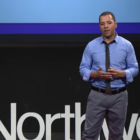
Plummeting Youth Crime Demands New Solutions, Thinking
|
In 1990, in California’s 15 largest cities, 373 youths (in a population ages 10 to 17 of 850,000) were arrested for homicide. In 2015, in those same cities (now with 1.1...
Juvenile Justice Information Exchange (https://jjie.org/tag/california/page/7/)

In 1990, in California’s 15 largest cities, 373 youths (in a population ages 10 to 17 of 850,000) were arrested for homicide. In 2015, in those same cities (now with 1.1...

The effects of our justice system extend beyond the walls of prison, jail or juvenile hall. Justice involvement erects numerous lifelong barriers to housing...

A nationwide shift toward abolishing solitary confinement for juveniles, which began to take shape in 2016 after former President Barack Obama banned the...

California’s juvenile prisons have long had a poor reputation as mere stops on the way to grown-up prisons, overcrowded places where reform or rehabilitation were rarely achieved.

Decades of research from the fields of criminology and adolescent brain science find that the decisions made in youth — even very unwise decisions — do not...

A new California law that gives all juveniles the right to a hearing before they can be transferred to adult court will require training and vigilance across the state to put in place, supporters say.

Those who equate juvenile justice reform with better institutions should consider the California lesson.

When I was 13, I was convicted of first-degree murder for my involvement in the loss of another child’s life. I was sentenced to 25 years in the Illinois Department of Corrections and labeled an incorrigible gang member. Since my release I have dedicated ourselves to uplifting our communities. Much like me, these men at San Quentin can help ensure that other children do not go down the same path they traveled in life.

Social workers “look at the delinquency system as having the power to control these [foster] kids. And the control is they get locked up. They think of that as a traditional method of disciplining the kids.”

Over the past 15 years, the United States has seen drastic reductions in its world-leading rates of youth incarceration. Nowhere were these reductions more dramatic than in California, which once boasted the largest youth corrections system in the world.